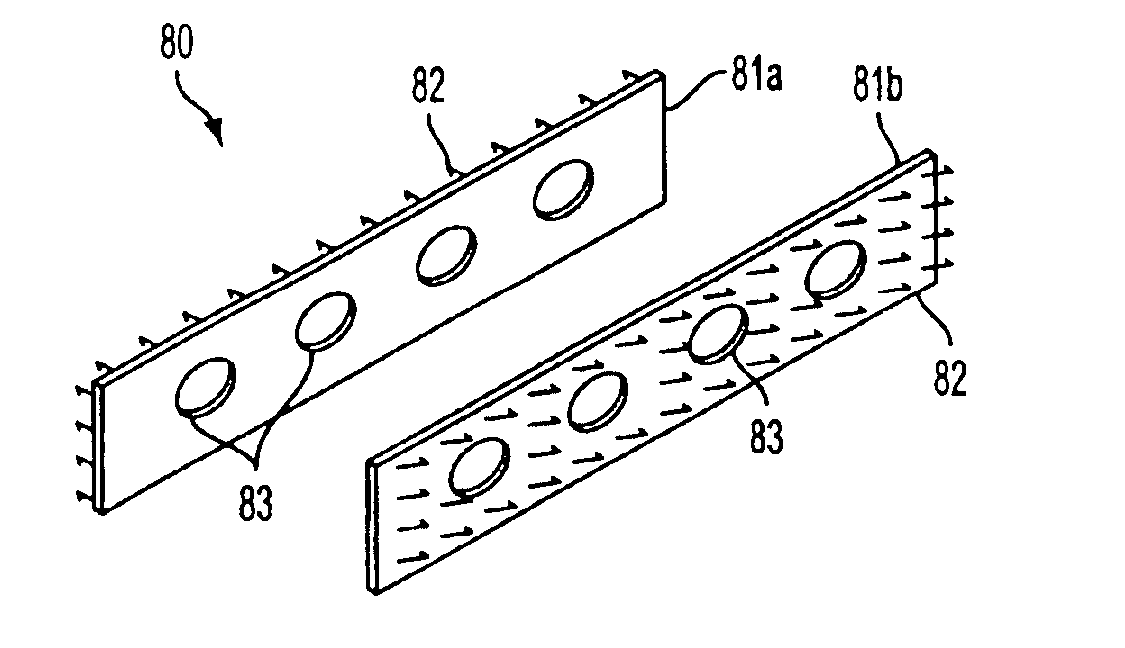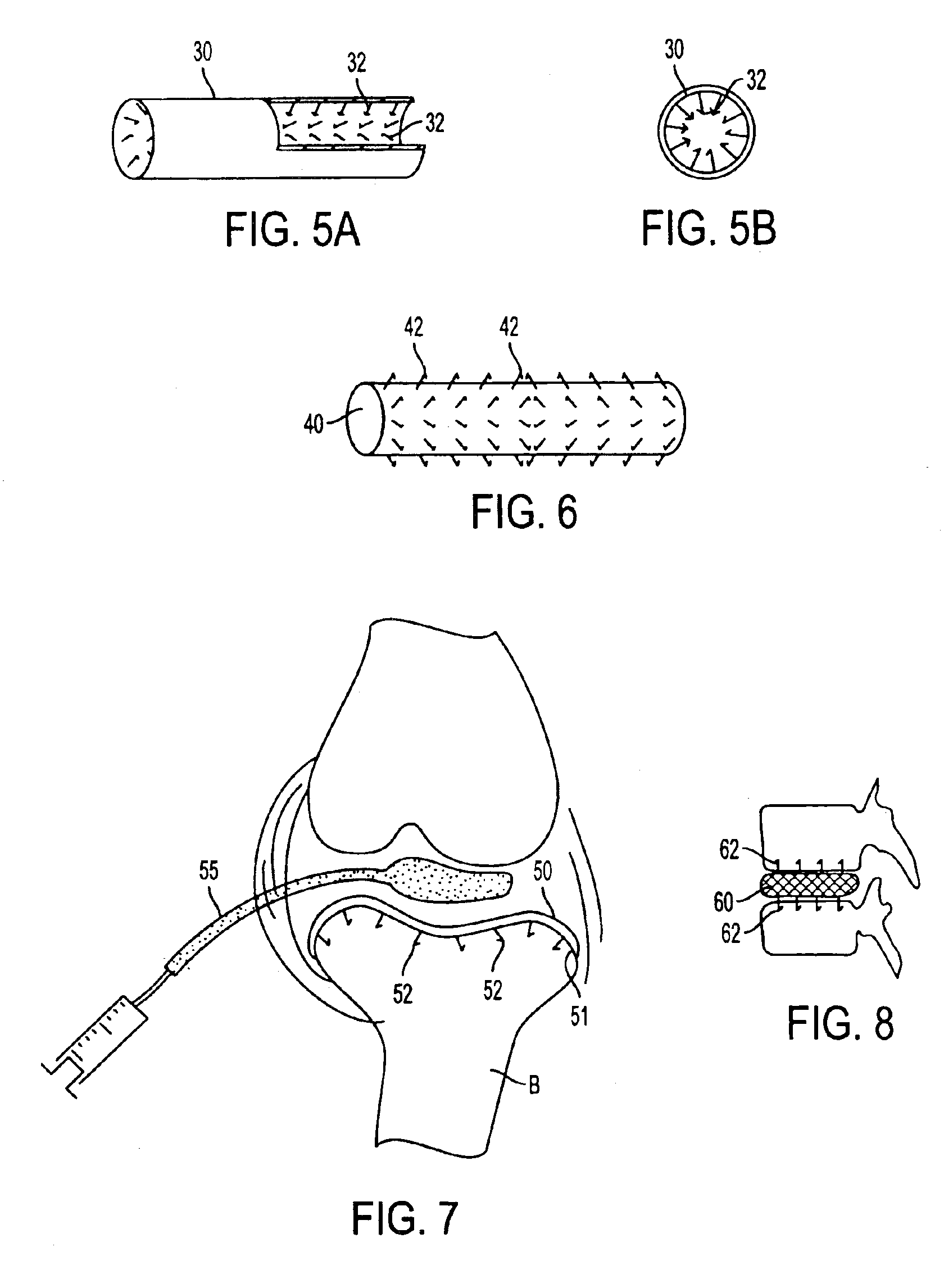Multi-barbed device for retaining tissue in apposition and methods of use
a multi-barbed device and tissue technology, applied in the field of multi-barbed devices, can solve the problems of requiring considerable manual dexterity and patience, affecting the healing process, and consuming too long to provide effective wound closure, so as to improve the healing process
- Summary
- Abstract
- Description
- Claims
- Application Information
AI Technical Summary
Benefits of technology
Problems solved by technology
Method used
Image
Examples
Embodiment Construction
[0044]Referring to FIGS. 1 to 4, a preferred embodiment of multi-barbed, multi-sided device 20 of the present invention is described for attaching coapting and maintaining two sides of a wound. Device 20 comprises substrate 21 having multiplicity of barbs 22 projecting from opposite sides 23 and 24. Barbs 22 have sharpened distal ends 25 that enable the barbs to penetrate tissue.
[0045]Substrate 21 may be either rigid or flexible, and preferably comprises a thin sheet or strip of a bioabsorbable polymer that can be absorbed by the body such as polylactic acid, polyglycolic acid, polycaprolactone, polyethylene glycol, or other bioabsorbable polymers known in the art. Substrate 21 may by either solid or include mesh-like perforations 26 that permit the wound edges to communicate with one another, thereby facilitating the healing process. Depending upon the intended application, substrate 21 may be made sufficiently flexible to conform to the tissue to be joined.
[0046]In the embodiment ...
PUM
| Property | Measurement | Unit |
|---|---|---|
| biocompatible | aaaaa | aaaaa |
| perimeter | aaaaa | aaaaa |
| time | aaaaa | aaaaa |
Abstract
Description
Claims
Application Information
 Login to View More
Login to View More - R&D
- Intellectual Property
- Life Sciences
- Materials
- Tech Scout
- Unparalleled Data Quality
- Higher Quality Content
- 60% Fewer Hallucinations
Browse by: Latest US Patents, China's latest patents, Technical Efficacy Thesaurus, Application Domain, Technology Topic, Popular Technical Reports.
© 2025 PatSnap. All rights reserved.Legal|Privacy policy|Modern Slavery Act Transparency Statement|Sitemap|About US| Contact US: help@patsnap.com



